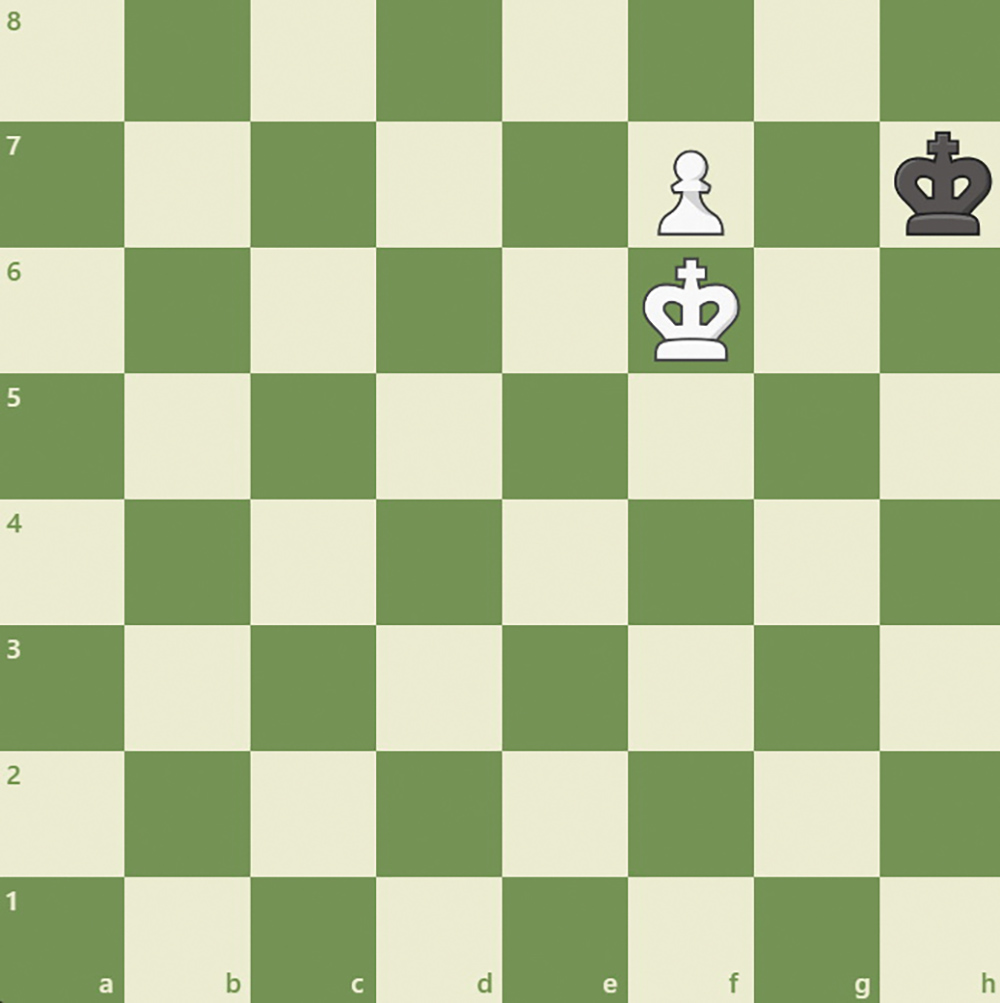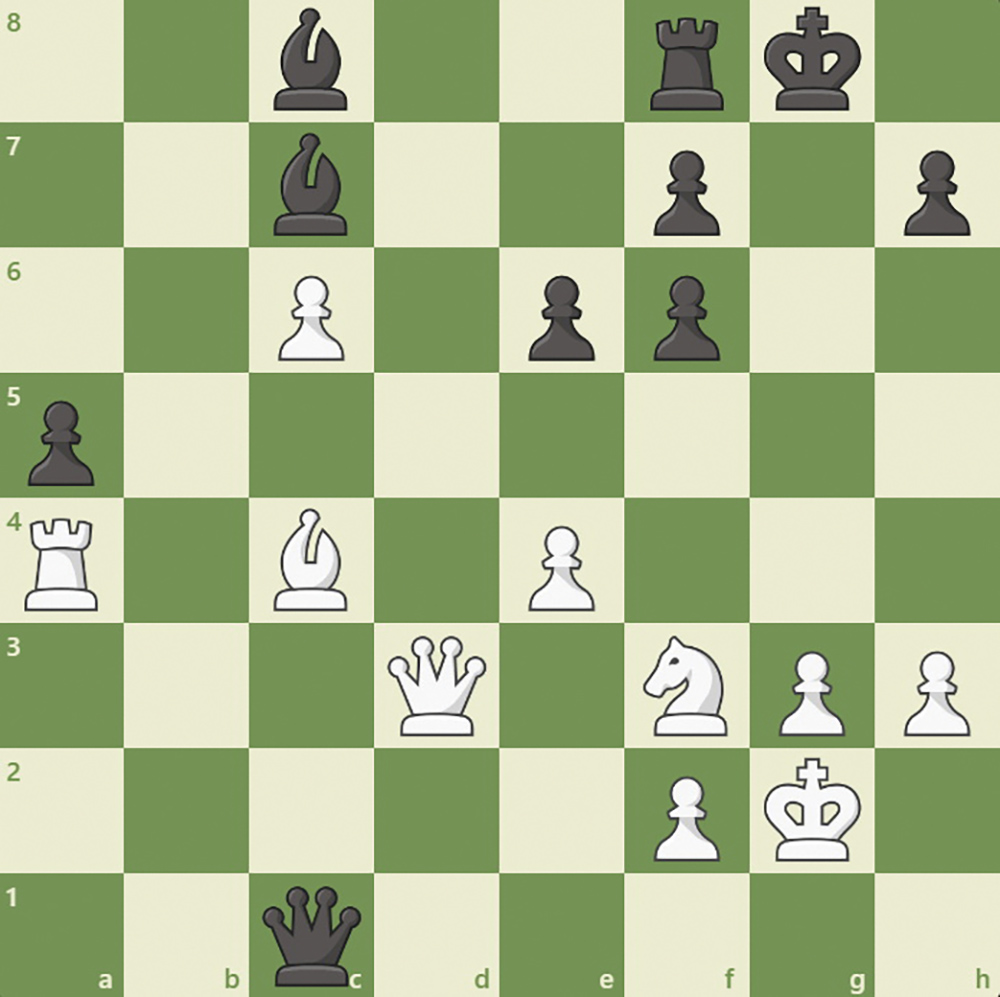In chess, underpromotion is the idea of promoting a pawn to a knight, bishop or rook rather than a more powerful queen, typically to avoid stalemate or achieve a particular mating pattern. Although relatively rare, when relevant, underpromotion can be an absolutely critical tool to winning a game. This concept is demonstrated in the position shown in Figure 1 in which white has a pawn on the f7 square, one move away from reaching the backrank and promoting. However, if the pawn is immediately promoted to a queen, the black king is stalemated as the queen covers the g8, h8 and h6 squares, depriving the black king of any movement. Therefore, the fastest checkmating sequence for white necessitates the underpromotion of the pawn to a rook which, unlike the queen, does not target the h6 square from the f8 square. After the pawn is promoted to a rook on f8, the black king is forced to go to h6, allowing the simple rook to h8 checkmate.

Figure 2 is a position from a game from the 1994 Women’s Candidates Tournament between Grandmaster Pia Cramling with the white pieces and International Master Alisa Galliamova with black. Material is equal but major imbalances exist within the position, as both sides have a passed pawn, black’s king is open due to the doubled g pawns and white has a knight while black has a light-squared bishop. Cramling began with 1. Qd2, offering a queen trade to remove the powerful black queen from applying pressure on the white position across the board. 1… Qxd2 2. Nxd2 e5 and black advances the e pawn to the center, opening up her light-squared bishop and taking more central space. Cramling then begins transferring the knight to a more active role on the queenside with 3. Nb3 Be6 4. Nc5 Bxc4 5. Rxc4 Ra8. Here, white continues to activate her pieces and begins the next plan of the game, traversing the king to a more powerful position in the black kingside where it too can apply pressure to the black position. 6. Kf3 Kf8 7. Kg4 Ke7 8. Kf5 Bb6, threatening to trade white’s excellent knight for black’s not-so-great bishop and aiming at the f2 pawn behind the knight. 9. Nd7 Bxf2 10. Nxf6 and here Galliamova makes the losing mistake, 10… Bxg3. The natural-looking move, winning a pawn, fails because black is then rendered unable to prevent the promotion of white’s c pawn after 11. Nd5+ Kd6 12. Nb6 Rg8 13. c7 Bh4. Here, Cramling won the game with 14. c8=N+, after which black resigned, because black is forced to give up the rook for the knight, leaving white in a completely winning position with a rook for two pawns.

The position displayed in Figure 3 is from the 1972 Leningrad Championship between Aron Reshko with white and Oleg Kaminsky with black. White has a passed pawn on a7, one square away from promotion on the backrank. However, if the pawn is promoted to a rook or queen, black has the stalemate trick queen to f7 check. White’s e8 queen is forced to capture as the king on h5 has no escape squares and after queen takes f7, the black king has no squares to move to and the game ends in a stalemate draw. Pawn to g5 blunders queen to f3, checkmate in 1. Promoting to a knight results in a draw after queen to a7 as the white queen cannot both guard the f7 square to prevent checkmate and also provide assistance to the knight to get into the game; if white plays pawn to g5 after queen a7, too many pawns are traded off and the endgame is simply a draw. Therefore the winning idea for white is to underpromote the pawn to a bishop, as queen f7+ no longer results in stalemate if captured and the bishop can easily be transferred into the game. Following a trade of queens, Reshko went on to win the game 10 moves later.

Figure 4 is from a game played at the 2009 4th Fide Grand Prix between Grandmasters Vladimir Akopian with white and Sergey Karjakin with black. White is up a pawn and has a passed pawn on a7, one square away from promotion. However, if white promotes the pawn to a queen, rook or bishop, black is able to force perpetual check after queen takes b2 check. The queen can then simply check the white king back and forth between the a and b files, drawing the game. Therefore, the winning move for white is to promote the a7 pawn to a knight so that after queen takes b2 check, white can block the check with a check of his own with the move knight to b6, after which the black queen is forced to sacrifice itself for the knight as black has no other moves in that position. If black does not take on b2, white is completely winning with an extra knight in a completely dominant position, causing Karjakin to resign after the pawn was promoted to a knight.

Ethan Feder is a rising senior at Yeshivat Frisch, a chess enthusiast, instructor and player. The goal of his column is to teach and discuss chess concepts through example positions, high-level games and relevant puzzles, along with explanations. Feel free to contact him with any questions, suggestions or comments at ethan.feder@gmail.com.










